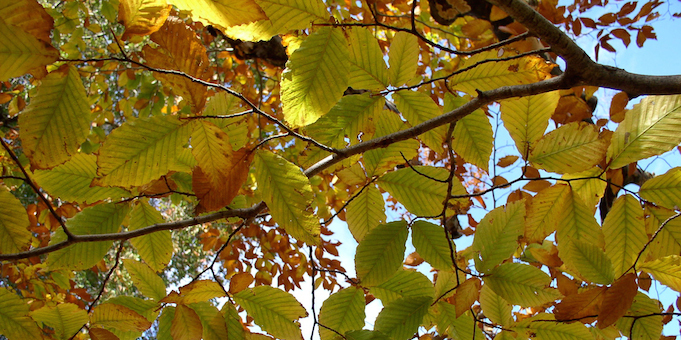Did your new garden furniture, construction lumber, printer paper or book cost an orangutan its home? Unfortunately, few of us know the origin of the forest products we purchase. And even fewer know whether the wood used in these products was taken and traded legally and sustainably before arriving in our homes and offices.
But knowing matters. And choosing responsibly — asking for and buying wood and paper products certified by the Forest Stewardship Council (FSC) — is something we can all do that is good for people, good for forests and good for the planet.
There are tragic hidden costs to the wood and paper products that we can buy so cheaply and without knowing their source. Major consumer countries — like the United States, Japan and others — import an estimated $6 billion worth of illegally sourced wood products every year — and the consequences for people, wildlife and natural systems can be devastating. I’ve seen firsthand the effects of illegal logging, deforestation and poor forest management during my eight years in Southeast Asia.
Governments there typically grant forest-harvesting rights to powerful businesses, which swoop in to remote areas and take high-value trees beyond the permitted levels and outside of permitted areas.
Once profits are taken, the remnants of the forest get converted into agricultural lands or used for other economic ventures. Local communities often have no say in the matter.
Over time, the livelihoods of these communities and their sources of food, shelter, water and traditional medicines are lost or degraded. And their cultures — which are often based on a deep connection to the forest and its wildlife — are destroyed. But people are not the only losers:
- Forest-dwelling orangutans, elephants, tigers, jaguars, and ancient tree species take another step toward extinction.
- And illegal logging plays an important role in causing climate change — because deforestation contributes almost one-quarter of the greenhouse gases in the atmosphere.
Less than 20 percent of wood products sold in the United States are certified. As long as we continue to accept uncertified products, we are leaving the market wide open to products that are very likely linked to injustice and environmental destruction in faraway forests.
Sustainable management practices — things like creating logging-free buffer areas around watersheds and negotiating collaborative management agreements with local communities — can help ensure a continued supply of timber while also safeguarding habitat, carbon, and community rights and beliefs.
But they require investments that most companies still aren’t willing to make without a corresponding demand from their buyers.
You can reverse this destructive trend by buying wood and paper products that have been certified by the Forest Stewardship Council (FSC).
Forest certification — the premier market-based, non-regulatory forest conservation tool — is designed to recognize and promote sustainable business practices in the forest products trade.
And FSC is the only global certification system in which forest management practices are evaluated by an independent third-party according to strong social, environmental and economic standards.
In essence, FSC certification is the “Good Housekeeping Seal of Approval” that forest ecosystems have been protected even as wood is harvested.
To get FSC-certified, a concession has to develop a system for monitoring and protecting High Conservation Value (HCV) areas found inside the timber concession. Official HCV areas include those with high biodiversity, habitat for endangered animals, and critical cultural importance to local people.
And there is a growing body of research that underscores an important reality: forests can be logged and satisfy a company’s economic needs while also preserving forest ecology and the rights of the people who work and live in them.
The FSC label gives corporations and consumers the assurance that the wood and wood-based products they purchase were sourced responsibly. FSC conserves forests, respects the rights of workers and communities, and is good for business.
Every time we buy FSC wood, we send a global message to suppliers that a well-managed forest is worth paying for.
While the value of FSC-certified products sold has quadrupled to US$20 billion since 2005, only around 10 percent of certified forests are found in the tropics. The U.S. is among the top three timber export destinations for all major wood-producing and -processing countries in Southeast Asia and China.
These trade relationships connect us to remote corners of the globe; they could help us make responsible forest management the standard way of doing business in tropical rainforests that require protection from business as usual.
New laws requiring U.S. and European importers to demonstrate the legality of their products — together with forward-thinking timber companies anticipating growing consumer affinity for sustainability — have led to a recent doubling of FSC-certified concessions in Indonesia. As consumers, we need to rise to the occasion and seek out this certified wood to encourage this positive trend.
You can find the FSC tree-and-checkmark logo on certain wood and paper products at major home improvement and office supply retailers. In addition, ask your favorite stores to stock FSC-certified products, and tell your friends and family to ask for FSC.
Promoting FSC demand among consumers and businesses in the United States is a top conservation strategy for the Conservancy — one that you can help us accomplish, every day.
by Jack Hurd, Director of the Nature Conservancy’s Forest Trade Program
www.nature.org/greenliving/gogreen/everydayenvironmentalist/buy-fsc-its-good-wood.xml



Recently on Twitter